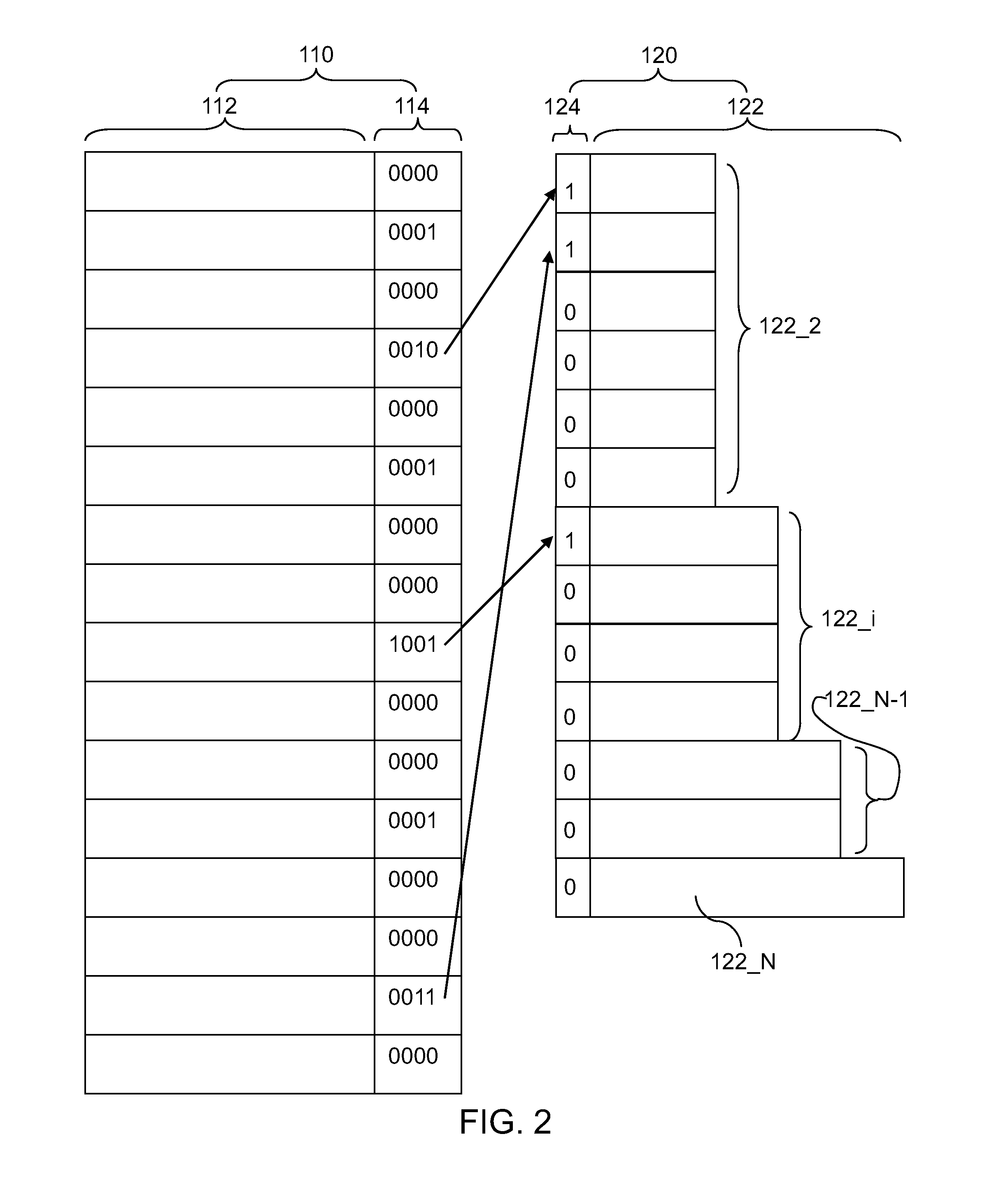Adaptive multi-bit error correction in endurance limited memories
a memory and multi-bit technology, applied in error detection/correction, instruments, computing, etc., can solve the problems of insufficient single-bit error recovery schemes, insufficient error correction, and prone to limited write endurance of most resistive memory devices, so as to reduce the overhead of total error correction logic, reduce the overhead of error correction hardware, and achieve sufficient error correction
- Summary
- Abstract
- Description
- Claims
- Application Information
AI Technical Summary
Benefits of technology
Problems solved by technology
Method used
Image
Examples
first embodiment
[0026]Referring to FIG. 2, components of the plurality of memory blocks 110 and the ECL entry block 120 according to the present disclosure are illustrated. The plurality of memory blocks 110 includes a plurality of individual memory blocks. Each individual memory block includes a data bit block 112 that includes first bits configured to store data and a pointer bit block 114 that includes second bits configured to store a pointer to an ECL entry within the ECL block 120. Each individual memory block is schematically represented by a rectangle representing a data bit block 112 and a laterally adjoined rectangle representing a pointer bit block 114.
[0027]The total number of second bits in each pointer bit block 114 can be selected to enable addressing all addresses in the ECL entry block 120 and to indicate two additional states. The first additional state is a no-error state, i.e., a state in which the corresponding data bit block 112 does not include any error. The second additiona...
second embodiment
[0054]The second embodiment enables reduction of error correction logic overhead by allowing multiple memory blocks to share the same error correction logic stored in the same ECL entry. In order to implement sharing of the same ECL entry for multiple memory blocks having writing errors in the same set of faulty bit positions, an additional check can be performed before allocating an error correction logic to determine whether there is an already allocated ECL entry which corrects the errors in the same bit positions as with the newly detected error-containing memory block that includes at least one new writing error.
[0055]The ECL entry block 120 can include a plurality of at least one occupancy bit 124. In one embodiment, the at least one occupancy bit 124 corresponding to each ECL entry can be a plurality of bits. Each plurality of bits can indicate how many of the memory blocks include writing errors that can be corrected by employing information stored in the each ECL entry. For...
PUM
 Login to View More
Login to View More Abstract
Description
Claims
Application Information
 Login to View More
Login to View More - R&D
- Intellectual Property
- Life Sciences
- Materials
- Tech Scout
- Unparalleled Data Quality
- Higher Quality Content
- 60% Fewer Hallucinations
Browse by: Latest US Patents, China's latest patents, Technical Efficacy Thesaurus, Application Domain, Technology Topic, Popular Technical Reports.
© 2025 PatSnap. All rights reserved.Legal|Privacy policy|Modern Slavery Act Transparency Statement|Sitemap|About US| Contact US: help@patsnap.com



